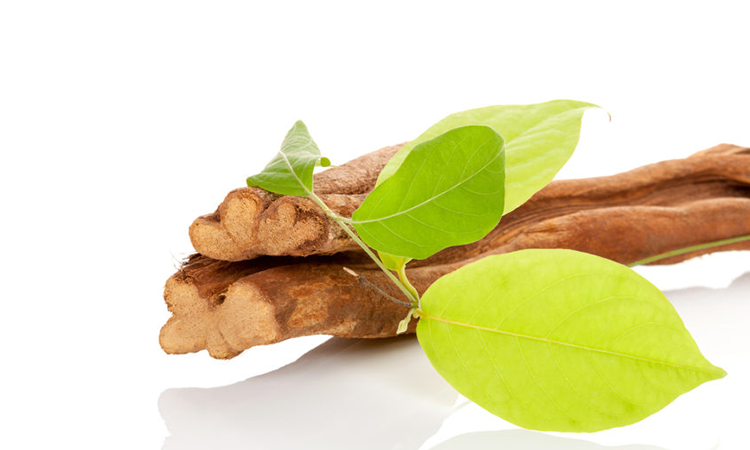
Ayahuasca is a traditional brew or tea native to the Amazon that can produce an altered state of consciousness in users. It is made from two plants – B. caapi and P. viridis, the latter of which contains DMT or dimethyltryptamine. DMT is a naturally-occurring molecule similar in structure to serotonin and is responsible for the powerful experience that ayahuasca users seek.
Dimethyltryptamine is found in hundreds of plant species, and some believe that endogenous DMT (produced naturally in the body) is involved in out-of-body or spiritual experiences.
What is Ayahuasca? – A Brief History
It is unknown how long indigenous peoples have used ayahuasca, but the first records of Europeans encountering it dates back to the 16th century. Missionaries from Portugal and Spain who traveled to South America discovered native people using it, and described it, albeit controversially, as the work of the devil.
In traditional cultures, ayahuasca is often used by shamans/spiritual leaders to facilitate communication with nature. It is also used by the shamans to help identify spiritual deficits in others – for example, in Brazil, ayahuasca ceremonies are held in which participants use the drug and sing and chant.
In Western society, people have become interested in the mind-altering effects of ayahuasca and DMT, especially after hearing stories told by others detailing how using the drug has been successfully used to treat a variety of conditions such as depression and alcoholism.
How Does Ayahuasca Work? What are the Effects?
It’s important to understand that the ayahuasca vine itself doesn’t necessarily have psychoactive properties, but when combined with the p. viridis plant to create a brew, a psychedelic effect is produced.
The B. caapi vine contains monoamine oxidase inhibitors, or MAOIs, that induce sickness when ayahuasca is consumed. The primary job of the MAOIs is to stop the stomach from metabolizing the active ingredient in the P. viridis leaf, the potent psychoactive chemical DMT.
Within a half hour after drinking ayahuasca tea, users report experiencing hallucinations and other effects that usually peak after about an hour, and can last for up to six hours. These effects, although they may seem similar at first glance, are usually described as being somewhat different and more emotional/spiritual than say, LSD or psychedelic mushrooms.
Despite the differences in psychoactive experiences, effects on the brains are similar to those of other hallucinogens. All such substances, including LSD and MDMA, impact neural activity in certain brain regions such as the visual cortex – this is why experts believe these drugs induce variations in emotional senses, a higher level of consciousness and increased introspection.
Ayahuasca use also increases activity in the limbic system, which is associated with the processing of memories and emotions. It can also result in a meditative state and calm overactive brain actions such as those that result in depression and anxiety.
Is Ayahuasca Legal?
While DMT is illegal in most countries, the plant sources that contain it are not necessarily. This fact has resulted in the purchase of these plants online, even in the United States where DMT is classified as a schedule I substance (indicating a high potential for abuse and no accepted medical value.)
Indeed, the legal status of DMT-containing plants in the U.S. is a bit vague. The plants and preparations themselves are not illegal, as they do not include illicit chemicals. However, brews or teas made from these plants ARE illegal because of DMT’s schedule I status.
However, concerning this fact, there have been challenges set forth by religious organizations, and as a result, some court cases have allowed certain groups to import ayahuasca to the U.S. for religious purposes.
Is Ayahuasca Tea Safe? What are the Potential Side Effects and Risks?
There are a few effects of using ayahuasca that can be serious. One, when using any mind-altering substance, the user is at risk for behaving and acting in ways that are dangerous to oneself or others.
Two, overuse of ayahuasca, or the use of ayahuasca with other medications such as antidepressants can lead to a potentially fatal condition known as serotonin syndrome. Serotonin syndrome occurs when the body builds up an excessive amount of serotonin, which can lead to headaches, disorientation, agitation, and high blood pressure.
Other potentially fatal risks linked to ayahuasca use include seizures, respiratory arrest, and coma. There have been a handful of reported deaths linked to ayahuasca use, usually due in part to the existence of a heart condition or an interaction with other drugs.
The purge effect of ayahuasca (vomiting and diarrhea) can lead to dehydration and electrolyte imbalances. Other side effects may dizziness, increased heart rate and blood pressure, agitation, chest pain, and in high doses, seizures.
In people who have pre-existing mental health disorders, such as schizophrenia can also incur severe side effects when using ayahuasca. Some people report experiencing severe anxiety, fear, and paranoia.
Treatment for Drug and Alcohol Addiction
Although the use of ayahuasca or DMT is not known to cause a chemical addiction, there is still the potential for a psychological addiction. Also, people who experiment with hallucinogens may be more likely to use other, more dangerous substances such as alcohol or heroin.
Drug addiction and alcoholism, however, can be effectively treated through a comprehensive, evidence-based program that includes behavioral therapy, counseling, and group support. Our center offers these services in inpatient, partial hospitalization, and outpatient formats.
Our clinical staff specialize in addiction and provide our clients with the tools they need to fully recover and sustain long-lasting sobriety. You don’t have to do it alone – you can regain your sanity and experience the health and wellness you deserve.